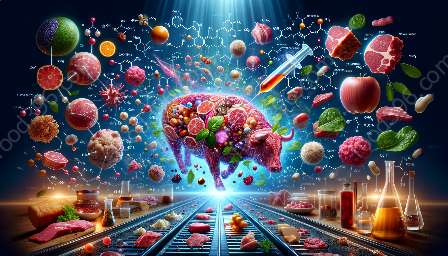Meat processing and product development are essential aspects of the food industry, involving the transformation of raw meat into a variety of end products. This comprehensive guide will delve into the intricacies of meat processing and product development, while considering the crucial role of meat chemistry and meat science in these processes.
Understanding Meat Processing
Meat processing encompasses a range of techniques designed to convert animal muscle tissues into edible products. This includes various operations such as cutting, grinding, mixing, and seasoning, as well as curing, cooking, and packaging. The primary goals of meat processing are to enhance sensory attributes, prolong shelf life, and ensure food safety.
Significance of Meat Chemistry
Meat chemistry plays a pivotal role in the processing of meat. Understanding the composition and properties of meat at the molecular level is crucial for optimizing processing methods and developing high-quality meat products. Key areas of meat chemistry include protein functionality, lipid oxidation, and the role of additives and ingredients in influencing meat characteristics.
The Science of Meat
Meat science delves into the biological, chemical, and physical principles underlying the properties and behavior of meat. From muscle structure and functionality to post-mortem changes and aging, meat science provides valuable insights into the factors that impact meat quality and consumer satisfaction. This knowledge is vital for improving processing techniques and creating innovative meat products.
Product Development in the Meat Industry
Product development in the meat industry involves the creation of new and improved meat-based products to meet consumer demands. This encompasses recipe formulation, sensory analysis, and the utilization of advanced technologies to enhance product attributes and extend market reach. Meat scientists and food technologists collaborate to innovate and address contemporary food trends.
Innovation and Market Trends
Advancements in meat processing and product development are influenced by market trends and consumer preferences. This includes the development of healthier, sustainable, and convenience-oriented meat products, often utilizing novel ingredients and processing methods. Understanding market dynamics is essential for successful product development and commercialization.
Quality Control and Assurance
Meat processing and product development require stringent quality control measures to ensure product safety and consistency. This encompasses the use of HACCP (Hazard Analysis and Critical Control Points) systems, sensory evaluation, and microbiological testing to monitor and maintain product quality throughout the production process.
Regulatory Compliance
Compliance with food safety regulations and labeling requirements is paramount in the meat industry. Meat processors and product developers must adhere to national and international standards to guarantee the safety and integrity of meat products, while also meeting consumer expectations and regulatory obligations.
Conclusion
Meat processing and product development are multidisciplinary fields that rely on the integration of meat chemistry and meat science to produce safe, nutritious, and appealing meat products. By combining scientific principles with innovative practices, the meat industry continues to evolve, catering to diverse consumer needs and preferences.

